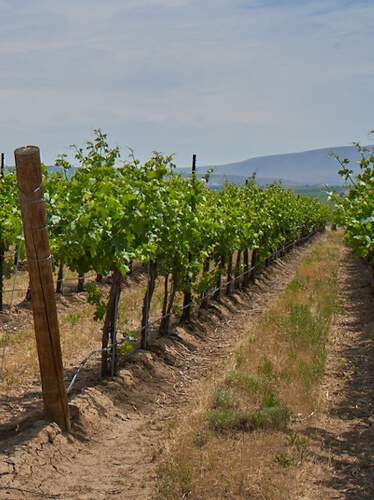AVA SERIES-RED MOUNTAIN
August is Washington Wine Month, not to be confused with Taste Washington Wine Month, which takes place in March. This month we pay tribute to the attributes that make Washington wine so special and show support to the growers, winemakers, and all industry members who participate in making Washington wine unique. So, what better way to kick off our Washington Wine month series than to take a deep dive into one of Washington State’s most special growing regions - the Red Mountain AVA (American Viticulture Area).
In France, the word terroir is used to describe all components that make a particular growing region special. The soils, climate, topography, geography, grape variety, and aspect all play a part in making a region unique. Although there’s no exact translation in English, Red Mountain truly shows a “sense of place.”
Established in 2001, Red Mountain is a sub, sub-appellation. Located in south-central Washington, Red Mountain AVA lies within the Yakima Valley AVA, which is one of sub-appellations of the larger Columbia Valley AVA. Ironically, it’s neither mountainous nor deeply red. The red hue comes from a grass called cheatgrass, which grows during the springtime and covers the slopes of Red Mountain.
With its arid continental climate, Red Mountain is the warmest and smallest of Washington’s viticulture areas with approximately 4,000 acres planted under vine. Its south-facing slopes and warm weather make it conducive to growing red grape varieties, especially those referred to as Bordeaux varieties, such as Cabernet Sauvignon, Merlot, Cabernet Franc, and Malbec, as well as Syrah and a handful of others.
Winds blow consistently through Red Mountain. Along with topsoil composed of sand, silt and alluvial soil that was deposited thousands of years ago by glaciers during the Missoula Floods, the wind is responsible for the intensely concentrated flavors of the grapes that come from Red Mountain.
The soil is nutrient-poor and well-drained, which leads to grapevines with well-established root systems. This means that the plant’s energy is focused on its berries and clusters, instead of the sprawl of the vines. The constant wind that comes off the Yakima River leads to berries a touch smaller in size and with thicker skins, leading to a higher skin-to-juice concentration ratio, which in turn provides more depth of aromas and flavors. With all these factors combining to make Red Mountain’s grapes so distinctive, it’s no surprise that Red Mountain AVA fetches the highest prices in the state for its grapes.
- Shelly Fitzgerald, Wine Education Specialist, CS, CSW, AWE, WSET Level 3
